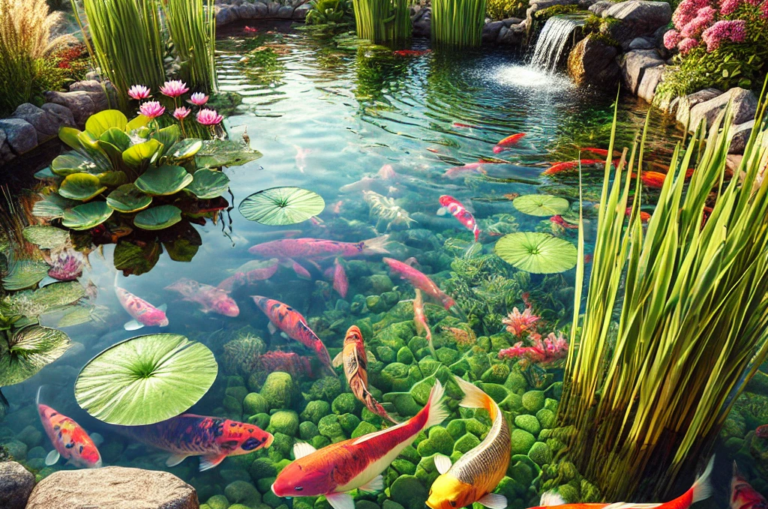Koi fish are among the most popular pond additions due to their vibrant Adding Koi Fish to Your Pondcolors and graceful movements. Adding koi to your pond brings life and elegance, but koi care requires specific conditions to keep them healthy. This guide covers the essentials of koi care and how to create a pond environment where they can thrive.
For professional help with koi pond design and maintenance, visit That Pond Guy’s Koi Pond Building Services, where experts can guide you through creating the perfect koi habitat.
1. Ensure Sufficient Pond Depth and Size
Koi need ample space and depth to grow and stay healthy. A pond designed for koi should be at least 3 feet deep to provide the room they need, especially in colder climates where they may overwinter in deeper water. The pond’s surface area also matters, as koi grow quite large and produce significant waste. Generally, allowing 250 gallons per koi ensures adequate space for each fish.
If you’re interested in creating a well-sized, koi-friendly pond, explore our Koi Pond Building Services for expert advice on pond dimensions and design.
2. Install Effective Filtration
Koi fish are large and produce a considerable amount of waste, so a reliable filtration system is essential. Filtration not only removes physical debris but also manages water quality by breaking down waste. Mechanical filters capture particles, while biological filters host beneficial bacteria that process toxins. Together, these systems maintain a healthy environment that minimizes algae and supports koi health.
To find the best filtration system for your pond, check out That Pond Guy’s Pond Filters, which includes options for both mechanical and biological filtration.
3. Choose Aquatic Plants Wisely
Koi tend to nibble on many types of plants, so choosing resilient plants that can thrive with koi is important. Floating plants like water lettuce and water hyacinths can provide shade and reduce algae growth while being less accessible to koi. Marginal plants around the edges, such as irises and reeds, create a balanced ecosystem and offer protection for fish.
For guidance on selecting plants that can coexist with koi, explore our Guide to the Best Plants for Koi Ponds, which includes tips on plants that enhance pond health.
4. Monitor Water Quality Regularly
Maintaining high water quality is critical for koi health. Regular testing allows you to monitor pH, ammonia, nitrate, and nitrite levels, all of which impact koi well-being. Koi ponds should have a stable pH between 7.0 and 8.5, and ammonia should remain as low as possible. Consistent water quality helps prevent stress and disease in koi, ensuring they remain vibrant and healthy.
Seasonal changes and weather can influence water quality, so frequent testing is recommended to catch any issues early. Routine checks ensure a balanced environment, which koi fish need to thrive.
5. Keep the Water Oxygenated
Oxygen levels are essential to the health of koi and beneficial bacteria that process waste. Adding an aerator, fountain, or waterfall increases oxygen levels, especially during warm months when oxygen depletion can occur. Koi are active fish, so they rely on well-oxygenated water to stay healthy and avoid stress. Aeration not only supports fish health but also helps prevent stagnation and algae growth.
For more on how to keep water oxygenated, our Pond Care Guide offers additional tips on ensuring year-round pond health.
Final Thoughts
Adding koi to your pond brings color, movement, and beauty to your garden, but creating a suitable environment is essential for their well-being. By providing adequate space, effective filtration, balanced plant life, and proper aeration, you can create a thriving habitat that keeps your koi healthy and happy. With these steps, your koi pond will become a lively, stunning centerpiece in your garden.
For expert assistance with koi pond care, visit That Pond Guy for services tailored to designing and maintaining a pond that meets the unique needs of koi.
